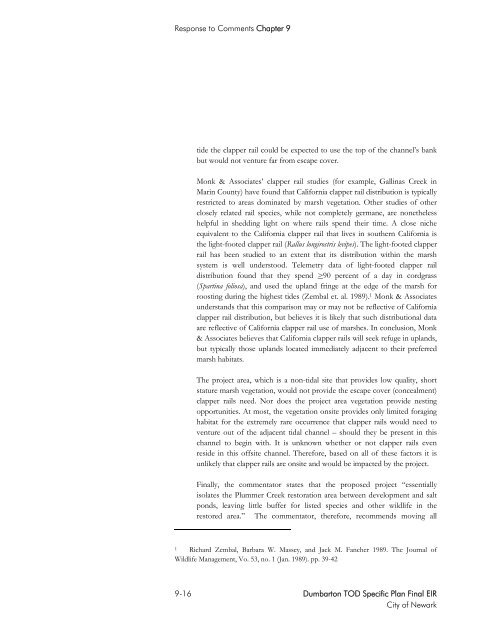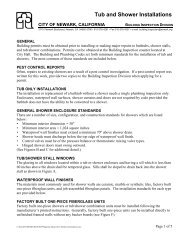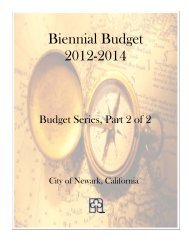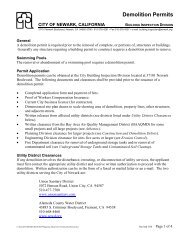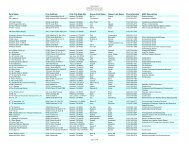Dumbarton TOD - Final Environmental Impact Report - City of Newark
Dumbarton TOD - Final Environmental Impact Report - City of Newark
Dumbarton TOD - Final Environmental Impact Report - City of Newark
You also want an ePaper? Increase the reach of your titles
YUMPU automatically turns print PDFs into web optimized ePapers that Google loves.
Response to Comments Chapter 9tide the clapper rail could be expected to use the top <strong>of</strong> the channel’s bankbut would not venture far from escape cover.Monk & Associates’ clapper rail studies (for example, Gallinas Creek inMarin County) have found that California clapper rail distribution is typicallyrestricted to areas dominated by marsh vegetation. Other studies <strong>of</strong> otherclosely related rail species, while not completely germane, are nonethelesshelpful in shedding light on where rails spend their time. A close nicheequivalent to the California clapper rail that lives in southern California isthe light-footed clapper rail (Rallus longirostris levipes). The light-footed clapperrail has been studied to an extent that its distribution within the marshsystem is well understood. Telemetry data <strong>of</strong> light-footed clapper raildistribution found that they spend >90 percent <strong>of</strong> a day in cordgrass(Spartina foliosa), and used the upland fringe at the edge <strong>of</strong> the marsh forroosting during the highest tides (Zembal et. al. 1989). 1 Monk & Associatesunderstands that this comparison may or may not be reflective <strong>of</strong> Californiaclapper rail distribution, but believes it is likely that such distributional dataare reflective <strong>of</strong> California clapper rail use <strong>of</strong> marshes. In conclusion, Monk& Associates believes that California clapper rails will seek refuge in uplands,but typically those uplands located immediately adjacent to their preferredmarsh habitats.The project area, which is a non-tidal site that provides low quality, shortstature marsh vegetation, would not provide the escape cover (concealment)clapper rails need. Nor does the project area vegetation provide nestingopportunities. At most, the vegetation onsite provides only limited foraginghabitat for the extremely rare occurrence that clapper rails would need toventure out <strong>of</strong> the adjacent tidal channel – should they be present in thischannel to begin with. It is unknown whether or not clapper rails evenreside in this <strong>of</strong>fsite channel. Therefore, based on all <strong>of</strong> these factors it isunlikely that clapper rails are onsite and would be impacted by the project.<strong>Final</strong>ly, the commentator states that the proposed project “essentiallyisolates the Plummer Creek restoration area between development and saltponds, leaving little buffer for listed species and other wildlife in therestored area.” The commentator, therefore, recommends moving all1 Richard Zembal, Barbara W. Massey, and Jack M. Fancher 1989. The Journal <strong>of</strong>Wildlife Management, Vo. 53, no. 1 (Jan. 1989). pp. 39-429-16 <strong>Dumbarton</strong> <strong>TOD</strong> Specific Plan <strong>Final</strong> EIR<strong>City</strong> <strong>of</strong> <strong>Newark</strong>


